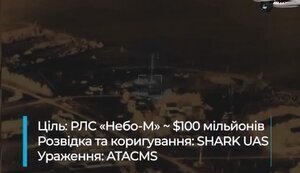Ukraine, under President Zelenskyy's directive, aims to strengthen its defense collaboration with the U.S., focusing on acquiring advanced weaponry such as ATACMS. The Pentagon has recently been cautious, selectively allowing the use of these long-range missiles, as seen in operations like the strike on Crimea's bridge. Despite logistical challenges and limited stockpiles, Ukraine's strategic use of ATACMS continues to disrupt key Russian targets. The ongoing discussions and deliveries symbolize a crucial phase in bilateral defense cooperation, shaping Ukraine's resilience and tactical capabilities in its conflict with Russia. This dynamic involves intricate geopolitics, where military support is balanced with diplomatic considerations.
Why has the U.S. been hesitant to supply ATACMS to Ukraine?
The U.S. hesitated to supply ATACMS to Ukraine due to concerns about escalating tensions with Russia and the limited stock of these missiles. This caution reflects a strategic approach to balance between supporting Ukraine's defense needs and avoiding direct confrontation with Russia.
How has Ukraine utilized ATACMS in the conflict against Russia?
Ukraine has strategically deployed ATACMS to target significant Russian military infrastructure, including radar systems and logistical hubs, which has been pivotal in its defensive operations. These missiles offer a critical range and precision advantage in striking deep-seated enemy positions, enhancing Ukraine's offensive reach.
What are the implications of U.S. authorizing ATACMS strikes on Russian territory?
The U.S. authorization for ATACMS strikes on Russian territory escalates the conflict dynamics, signaling a robust support for Ukraine while potentially extending the theater of conflict deeper into Russian territory. This move is perceived as a strategic leverage to counter Russian military aggression effectively.
What challenges does Ukraine face with the current ATACMS supply?
Ukraine faces challenges such as a limited stockpile of ATACMS, which constrains prolonged operations. Securing a steady supply line while navigating diplomatic and political hurdles remains vital to sustain their long-range operational capabilities, demanding strategic resource management.
How has international opinion reacted to Ukraine's use of ATACMS?
International reaction to Ukraine's use of ATACMS is mixed. While many NATO allies support Ukraine's right to defend itself, some countries express concern over potential escalation with Russia. This dichotomy illustrates the geopolitical complexities involved in military support and strategic alignments within international frameworks.




















































